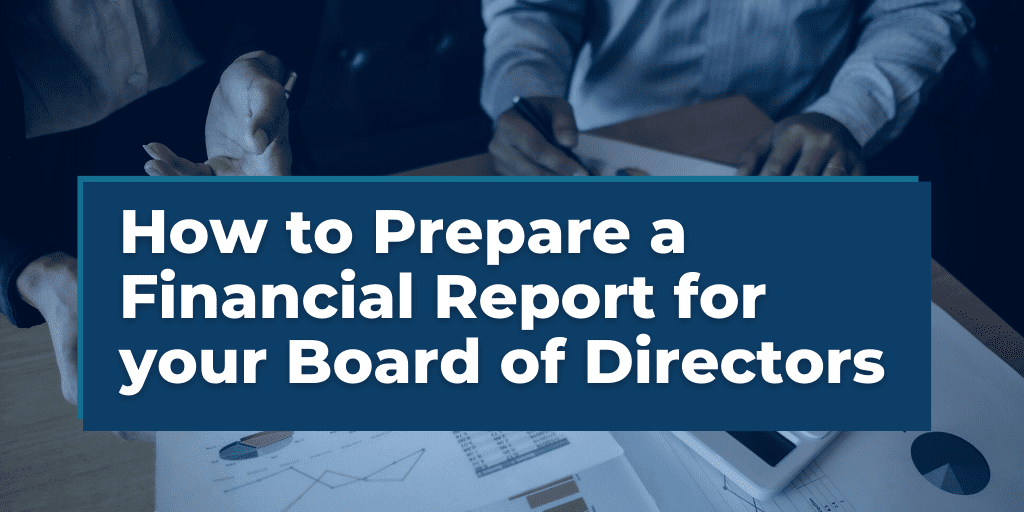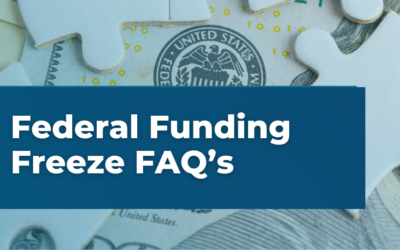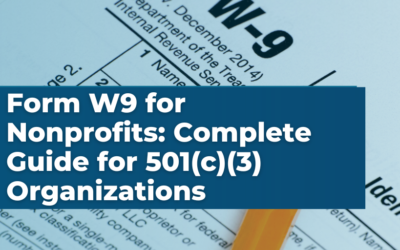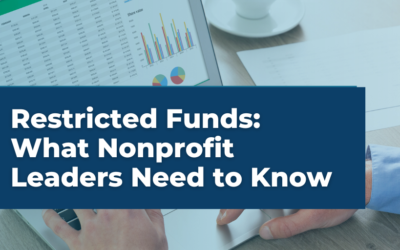In the nonprofit sector, the board of directors plays a crucial role in guiding the organization’s mission and financial stability. Key to their effectiveness is access to clear and comprehensive financial reports. These reports are vital for strategic planning, ensuring accountability, and maintaining donor trust. Yet, creating a financial report that caters to diverse financial literacy levels among board members and balances detail with clarity can be challenging.
This post will guide you through preparing and presenting effective financial reports to your board of directors. We aim to provide insights for both seasoned financial officers and newcomers to the nonprofit world, focusing on creating reports that are informative, engaging, and empowering.
Steps to Preparing a Financial Report for a Board of Directors
- Gather Financial Data
Collect all relevant financial information, including income, expenses, and assets. This step involves a thorough review of bank statements, invoices, receipts, and other financial documents to ensure completeness. - Reconcile Accounts: Ensure all accounts are reconciled and accurately reflect the nonprofit’s financial activities. Reconciliation helps in identifying and correcting any discrepancies between your records and bank statements.
- Classify Transactions: Classify each transaction according to its purpose and funding source. This classification aids in understanding how funds are allocated and helps in accurate reporting.
- Prepare Financial Statements: Create the primary financial statements, including the balance sheet, income statement, and cash flow statement. These statements provide a comprehensive view of the financial health and performance of the organization.
- Analyze Budget vs. Actuals: Compare actual financial results with the budgeted figures to identify variances. This analysis is crucial for understanding financial performance and aiding in future budget planning.
- Include Notes and Explanations: Provide explanatory notes for significant transactions or deviations from the budget. These notes add clarity and context, making the report more understandable for board members.
- Ensure Compliance: Check that the report complies with applicable accounting standards and regulatory requirements. Compliance ensures the report’s credibility and helps avoid legal and financial implications.
- Review and Revise: Have the report reviewed by a senior accountant or auditor for accuracy and completeness. A second set of eyes can catch errors and suggest improvements, enhancing the quality of the report.
- Executive Summary: Write a concise summary highlighting key financial results and insights for the board. The summary should encapsulate the main points, making it easier for board members to grasp the essentials quickly.
- Presentation Preparation: Prepare slides or other visual aids to help present the report to the board of directors. Effective visual aids can enhance understanding and engagement during the presentation.
Understanding the Audience: The Board of Directors
What is the Profile of a Typical Nonprofit Board Member?
Nonprofit board members come from diverse backgrounds, bringing a wealth of experience and expertise to the table. While some may have a robust understanding of financial matters, possibly with careers in finance, business, or accounting, others might have limited financial expertise, with backgrounds in areas like education, social services, or the arts. This variance in financial literacy is crucial to consider when preparing financial reports. The goal is to create a document that is accessible and understandable to all, regardless of their financial background. A successful financial report bridges the gap between complex financial data and practical, actionable insights for every board member.
What is the Role of Financial Reports in Board Decision-Making?
Financial reports are more than just statements of accounts; they are vital tools for strategic decision-making. A well-prepared report provides board members with the necessary information to evaluate the organization’s financial health, assess the effectiveness of programs and services, and make informed decisions about future investments and initiatives. It should offer a clear picture of the organization’s financial status, including its income sources, expenditures, cash flow, and financial position. This information is critical for the board to ensure the organization’s resources are used effectively and align with its mission and strategic objectives.
Importance of Clarity and Transparency in Reports for Trust-Building
Clarity and transparency in financial reporting are fundamental in building and maintaining trust among board members and other stakeholders, including donors, volunteers, and the public. A transparent report not only details what funds were received and how they were spent but also explains the reasoning behind financial decisions and any deviations from the budget. This level of openness fosters a culture of trust and accountability, crucial for the integrity and credibility of the nonprofit. Transparent reporting also empowers board members to be effective ambassadors for the organization, confidently engaging with donors and stakeholders about the organization’s financial practices and stewardship.
Essential Components of a Financial Report
Overview of Key Financial Statements
- Balance Sheet: The balance sheet provides a snapshot of your organization’s financial position at a specific point in time. It lists the assets (what the organization owns), liabilities (what it owes), and net assets (the difference between assets and liabilities, representing the organization’s equity). This statement is crucial for understanding the organization’s financial health and stability.
- Income Statement (Statement of Activities): This statement shows the organization’s financial performance over a period, detailing how revenue was generated and expenses were incurred. It provides insights into the main sources of income (like donations, grants, service fees) and major areas of expenditure (program expenses, administrative costs, fundraising expenses). The bottom line of the income statement shows the net income or loss, which indicates whether the organization is operating within its means.
- Cash Flow Statement: The cash flow statement tracks the inflow and outflow of cash within the organization. It is divided into three parts: cash flows from operating activities (day-to-day business), investing activities (purchases and sales of assets), and financing activities (loans and other forms of financing). This statement is vital for understanding the organization’s liquidity and its ability to sustain operations and fulfill its mission.
Other Important Components
- Budget vs Actuals: This component compares the organization’s budgeted figures with the actual financial performance. It highlights variances and can help in identifying areas where the organization is over or under-spending. This comparison is crucial for understanding financial management effectiveness and for making informed adjustments to future budgets.
- Notes on Significant Expenses or Revenues: These notes provide context and details about significant or unusual financial items. For instance, if there was a large, unexpected donation or a significant one-time expense, this section would offer an explanation, ensuring that board members understand the impact of these items on the overall financial picture.
The Role of Footnotes and Supplementary Information
Footnotes and supplementary information are integral parts of a financial report, offering deeper insights into the numbers presented in the financial statements. They may include details about accounting policies, commitments, contingencies, and other relevant information that affects the understanding of the organization’s financial condition. These details help in providing a complete and transparent view of the financial situation, ensuring that board members have all the necessary information to make informed decisions.
In the following sections, we will explore best practices for preparing these financial reports, ensuring they are not only comprehensive but also accessible to all board members, regardless of their financial expertise.
Best Practices for Report Preparation
Consistency in Format and Presentation
- Standardized Format: Adopting a standardized format for your financial reports is key. This means using the same layout, headings, and style in each report. Consistency makes it easier for board members to find and understand information, as they become familiar with the structure of the document over time.
- Clear Headings and Labels: Use clear, descriptive headings and labels throughout the report. This helps in quickly guiding readers to the most relevant sections and ensures that they can easily comprehend the content.
- Readable Fonts and Spacing: Choose fonts that are easy to read and use appropriate spacing. Avoid overcrowding the page; a clean layout helps make the report more approachable and less intimidating, especially for board members who may not be well-versed in financial jargon.
Use of Visuals for Easier Understanding
- Charts and Graphs: Visual aids like pie charts, bar graphs, and line charts can be extremely effective in illustrating financial data. They provide a quick and clear way to communicate complex information, such as trends in income and expenses, or the breakdown of revenue sources.
- Infographics: Consider using infographics to summarize key financial highlights or to show how funds have impacted different areas of the organization’s work. Infographics can make the data more engaging and easier to digest.
- Consistent Color Coding: If you use colors in your charts or infographics, maintain consistency in color coding across all reports. For example, always using the same color to represent a particular type of expense or revenue stream helps in building intuitive understanding over time.
Keeping the Report Concise Yet Comprehensive
- Balance of Detail and Summary: While it’s important to provide comprehensive information, avoid overwhelming the readers with excessive detail. Summarize the key points and provide an option to access more detailed data if needed.
- Executive Summary: Include an executive summary at the beginning of the report. This should highlight the most important findings and conclusions, allowing readers to grasp the essential points quickly.
- Focus on Actionable Insights: Tailor the content to focus on actionable insights and decision-relevant information. This means highlighting trends, variances, or issues that may require board action or attention.
By following these best practices, you can create financial reports that are not only informative but also accessible and engaging for your board of directors. This approach ensures that board members, regardless of their financial expertise, can effectively engage with the report and use the information to make informed decisions.
Common Challenges and How to Address Them
Addressing Complex Financial Concepts in an Accessible Manner
- Simplifying Language: Use plain language to explain financial terms and concepts. Avoid jargon and technical terms that may be unfamiliar to those without a financial background. If you must use complex terms, provide a clear, concise definition.
- Step-by-Step Explanations: For more complex financial concepts or processes, consider breaking them down into step-by-step explanations. This methodical approach can make challenging topics more digestible and less overwhelming.
- Real-World Examples: Utilize real-world examples or analogies that relate to the everyday experiences of board members. This can help in making abstract financial concepts more tangible and easier to understand.
Ensuring Accuracy While Meeting Deadlines
- Regular Updates and Review: Implement a process of regular updates and reviews throughout the year. This approach helps in catching and correcting errors early, rather than rushing through these checks just before a report is due.
- Leveraging Technology: Utilize accounting software and other financial management tools to streamline data collection and report generation. This can save time and reduce the risk of errors.
- Setting Realistic Timelines: Establish and communicate clear timelines for the preparation and review of financial reports. Allow sufficient time for thorough checking and revisions to ensure accuracy.
Handling Sensitive or Confidential Information
- Data Privacy Protocols: Establish strict data privacy protocols for handling sensitive financial information. This includes securing electronic files and controlling access to sensitive data.
- Anonymizing Data: When discussing specific donations, expenses, or other financial details, consider anonymizing the data to protect the privacy of individuals and organizations involved.
- Clear Communication on Confidentiality: Clearly communicate to board members the confidential nature of certain financial information. Provide guidelines on how to handle and discuss this information, especially in public or mixed settings.
By addressing these common challenges effectively, you can enhance the quality, reliability, and security of your financial reports. These strategies aim to make complex information accessible, ensure accuracy and timeliness, and maintain the confidentiality of sensitive data, thereby supporting the board’s decision-making process and upholding the integrity of the organization.
Tips for Effective Presentation to the Board
Preparing for Common Questions and Concerns
- Anticipate Questions: Before the presentation, think about potential questions the board members might ask. These could relate to significant expenses, revenue sources, budget variances, or future financial projections. Preparing responses in advance will help you address concerns more effectively during the presentation.
- Use of FAQs: Consider creating a Frequently Asked Questions (FAQ) section within your report or as a supplementary document. This can proactively address common queries and clarify complex areas of the financial report.
- Practice and Rehearsal: Practice your presentation to build confidence and ensure a clear and concise delivery. This also helps in timing your presentation, ensuring all key points are covered without rushing.
Strategies for Engaging Board Members in Financial Discussions
- Interactive Presentations: Use interactive elements in your presentation, such as polls or quick surveys, to engage board members actively. This can stimulate interest and encourage participation in financial discussions.
- Relate to Mission and Goals: Connect financial data to the organization’s mission and goals. For instance, show how specific expenditures or revenues have directly contributed to program success or mission advancement. This approach helps board members see the bigger picture and understand the relevance of financial decisions.
- Encourage Questions and Dialogue: Create an environment where board members feel comfortable asking questions and engaging in dialogue. Encourage them to share their insights or concerns, fostering a collaborative and inclusive discussion.
The Importance of Follow-Up and Open Communication
- Provide Detailed Answers Post-Meeting: If there are questions you can’t answer on the spot, commit to providing detailed responses after the meeting. This demonstrates your commitment to transparency and thoroughness.
- Open Channels for Ongoing Communication: Establish open channels for board members to ask questions or provide feedback after the presentation. This could be through regular updates, email correspondence, or scheduled one-on-one meetings.
- Solicit Feedback on Reports: Actively seek feedback on the financial reports and your presentation style. This feedback can be invaluable in improving future reports and presentations.
By employing these tips for effective presentation and follow-up, you can ensure that your financial reporting is not only informative but also engaging and responsive to the needs and concerns of the board. This approach fosters a culture of open communication and collaborative financial stewardship in the organization.
Legal and Ethical Considerations
Brief Overview of Legal Responsibilities in Financial Reporting
- Compliance with Regulations and Standards: Nonprofit organizations are required to comply with various financial reporting regulations and standards. This includes adherence to Generally Accepted Accounting Principles (GAAP) and ensuring accuracy in financial statements as required by federal, state, and local laws.
- Filing Requirements: Depending on the size and nature of the nonprofit, there might be specific filing requirements, such as the IRS Form 990. These filings are not just legal requirements but also public documents that can be reviewed by donors, grantmakers, and other stakeholders.
- Audit Requirements: For certain nonprofits, especially those receiving significant public funding or donations, there may be a requirement for an independent audit. Ensuring that your organization is prepared for and compliant with audit requirements is a key legal responsibility.
Ethical Implications of Financial Transparency and Accountability
- Building Trust with Stakeholders: Ethical financial reporting goes beyond legal compliance. It’s about building trust with stakeholders, including donors, beneficiaries, employees, and the public. Transparent and accountable reporting demonstrates that the organization is using its funds effectively and ethically.
- Preventing Fraud and Mismanagement: Ethical financial reporting also plays a crucial role in preventing fraud and financial mismanagement. It involves setting up internal controls and checks to ensure the accuracy and integrity of financial information.
- Responsibility to Mission and Beneficiaries: Nonprofits have a moral obligation to their mission and the people they serve. Ethical financial reporting ensures that the organization remains focused on its mission, using its resources in the most effective way to benefit its beneficiaries.
Incorporating these legal and ethical considerations into your financial reporting processes not only ensures compliance but also reinforces the integrity and credibility of your organization. It is a critical component in maintaining the trust and support of your board, donors, and the broader community your organization serves.
Conclusion
Effective financial reporting is not just a regulatory requirement; it’s a cornerstone in building a transparent, accountable, and trustworthy nonprofit organization. It empowers board members to make informed decisions, reinforces donor confidence, and, ultimately, contributes to the successful fulfillment of your organization’s mission.
As you strive to enhance your financial reporting processes, remember that you’re not alone in this endeavor. Whether you need further guidance, resources, or assistance in tailoring your financial reports to meet the unique needs of your organization, don’t hesitate to reach out.
For additional support, resources, or personalized consultation, feel free to contact us. Our team is dedicated to supporting nonprofits in achieving financial clarity and excellence, ensuring that your financial reporting not only meets but exceeds expectations.





